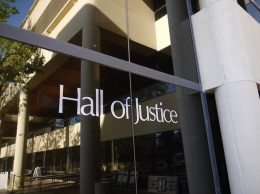There’s no way around it: The Great Recession deserves the moniker. When you look at regional economic data from the past five years — as I’ve done, in writing the Ventura County Civic Alliance’s latest State of the Region Report — you see just how bad things got between 2007 and 2009, and how little they’ve improved since.
The 2013 State of the Region, set for release on Feb. 20, is one of the chief projects of the Civic Alliance, which operates under the umbrella of the Ventura County Community Foundation. The Alliance is a coalition of civic leaders with a shared commitment to addressing the region’s problems in three main areas, known as the “three Es”: the economy, the environment, and social equity.
In the area of economics, the new report paints a grim picture: Ventura County’s gross county product plummeted 7.2 percent from 2007 to 2008, and the county’s output in 2011 was still smaller than it was in 2005. The annual average unemployment rate went from 4 percent in 2006 to 10.8 percent in 2010, settling back down to 8.6 percent in November 2012. And the median price of a home sold in the county dropped about 40 percent from its peak in 2006 to its trough in 2009.
Those statistics draw on what you might call “hard power” economic indicators, those that put dollar values on our assets and the output of our farms, factories and offices. The term comes from the world of foreign policy, where “hard power” means using military force and economic might to get other countries to do what you want them to.
There’s a second kind of national strength, dubbed “soft power” by Harvard’s Joseph Nye in 1990. Soft power refers to a nation’s ability to persuade others to do what it wants without force, threats or bribery. It includes culture, trade, diplomacy and political institutions.
You could call things such as good schools, clean air and low crime indicators of our soft economic power. And while Ventura County’s hard power has taken a hit, the new State Of The Region Report gives plenty of reasons to be optimistic about the future, based on those soft-power indicators.
For generations, Ventura County has attracted families and employers because of its low crime rate and the quality of its schools. Both of those remain strengths. The crime rate is among the lowest in the state, and it continues to drop, to levels probably considered unthinkable during the relatively high-crime 1980s and early 1990s.
Public schools everywhere face budget cuts and other challenges, but Ventura County schools are doing a fairly good job of meeting them. The county’s high school dropout rate is more than 20 percent lower than the state average, which has a long-lasting impact on the region’s prosperity. Data in our report shows that Ventura County residents age 25 and older with high school diplomas and no additional schooling earn about 50 percent more than those without high school degrees.
There is still an alarmingly wide gap between the best and worst schools in the county, when it comes to standardized test scores. However, those at the top have some of the best scores in the entire state. And the ones at the bottom tend to be moving in the right direction, with most of them consistently meeting their state targets for improvement.
Ventura County’s natural environment is another strategic advantage. The county has long had the cleanest ocean water in Southern California, and it keeps getting cleaner. In 2005, the county Environmental Health Division closed beaches 656 times for excessive bacteria levels; in 2011 that number was down to 96.
The air is getting cleaner, too. The frequency with which the South Central Coast Air Basin, which covers the Tri-Counties, exceeds state and federal ozone standards has dropped almost to zero. In 2011, ozone levels topped the state standard four days and the federal standard 11 days.
Even in the dreadful “hard power” data, there are silver linings. For example, lower home values mean more people can afford to join the ranks of homeowners. Half of Ventura County’s population now earns enough to afford the median-priced home, up from 13 percent in 2005.
These are just a tiny fraction of the hundreds of data points in the State of the Region. It is unique in its scope, with information that goes beyond economic forecasts to cover civic engagement, cultural resources and other measures of the county’s quality of life. The data was compiled by an independent group of researchers under the direction of Dr. Jamshid Damooei, a professor of economics at California Lutheran University.
The Ventura County Civic Alliance will host two release events. We would love to see you at one of them. The first is a 8 a.m. to 10:15 a.m. breakfast event on Wednesday, Feb. 20 at California Lutheran University’s Lundring Events Center at 60 West Olsen Road in Thousand Oaks.
The second is a wine and appetizer event from 3 p.m. to 5:15 p.m. on Thursday, Feb. 21 at the Ventura County Community Foundation Nonprofit Center at 4001 Mission Oaks Blvd. in Camarillo.
The cost to attend is $25, which includes a hard copy of the 2013 State of the Region Report. Register online by clicking here. If you have questions, contact Katrina Maksimuk at kmaksimuk@vccf.org or (805) 988-0196, ext 114.
• Tony Biasotti is a freelance journalist and the author of the Ventura County Civic Alliance’s 2013 State of the Region Report. He is also a former executive editor of the Pacific Coast Business Times.






 Print
Print Email
Email
















